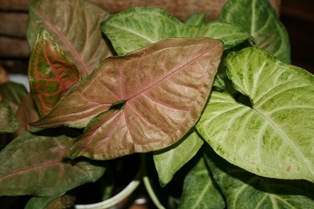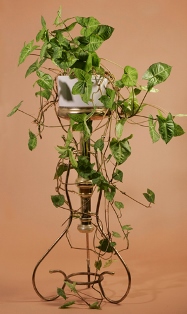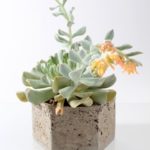Arrowhead Plant An Eye-Catching Viner
Featuring arrow-shaped leaves that are often variegated, arrowhead plant (Syngonium podophyllum) is a vining houseplant native to Latin America. Like its relative the climbing philodendron, as it matures, the tropical vine can trail and climb, becoming quite long if given ideal growing conditions. In the wild, it is an aggressive grower, reaching far up into the jungle canopy.
Arrowhead plant comes in several colors, including solid lime and dark green and variegated patterns of white and green and pink and green. It grows well in most home interiors, because it thrives in medium to low light conditions. The plant does equally well growing alone and in a mixed planting.
To have luck growing arrowhead plant, keep the following growing tips in mind.
Lighting. Arrowhead plant requires low to medium light. Bright light–especially direct sunlight—can burn the plant’s delicate foliage. When the plant is receiving too much overall light, the leaves yellow. Near a northern exposure window is ideal.
Watering. Keep arrowhead vine moist but not soggy. Wait for the top inch of soil to dry out before watering.



Plant stand photo this article, Chas Metivier; other photos Julie Bawden-Davis
Fertilizing. Feed arrowhead vine every two months with an organic all-purpose fertilizer.
Pests. Watch out for mealybugs and spider mites. Treat mealybugs by spraying with isopropyl alcohol and then rinsing the foliage well. Repeat as needed until the pest is gone. To prevent spider mites, keep the plant from drying out, as they thrive in dry conditions. Also spray with horticultural oil, which also kills the spider mite eggs.
Humidity. As jungle plants, arrowhead vine does best in high humidity conditions. Provide the plant with a humidity tray and place it near other plants, as they humidify the air for each other.
Pinching/supporting. For a bushy arrowhead plant that doesn’t vine, pinch out the plant’s growing tips regularly. If you want the plant to vine and climb, provide a support for it to grow on. The plant doesn’t produce tendrils for climbing, so it will require tying to the support. Or let the plant cascade, such as from a hanging basket or a bookcase.





